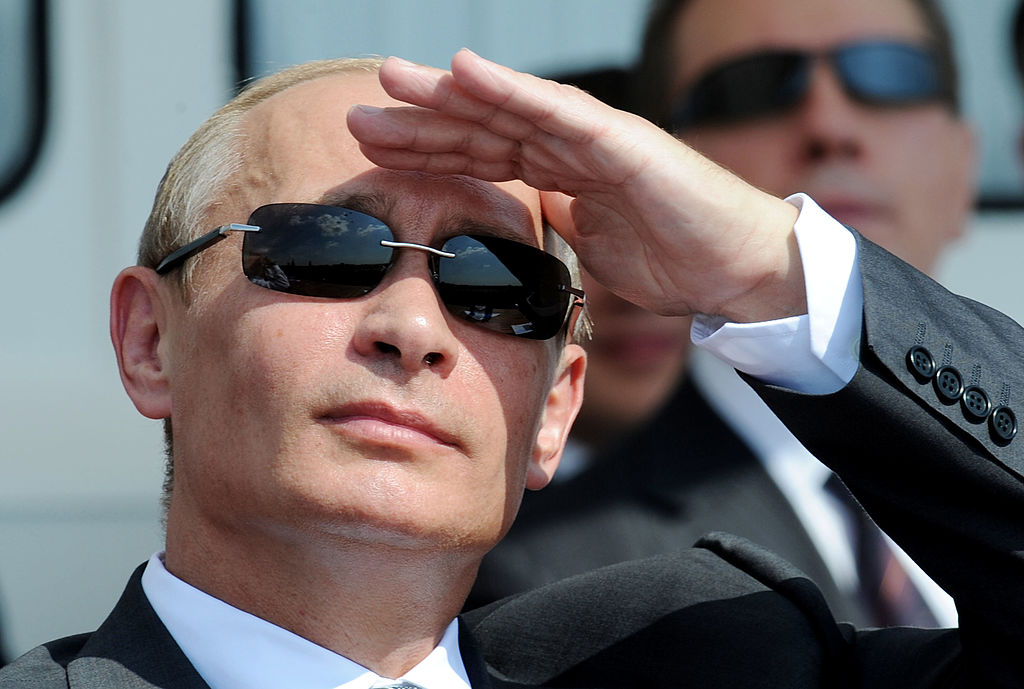The snow is falling in Moscow, but that is after the warmest autumn there on record. Meanwhile, perhaps reflecting that with the arrival of vaccines, there is at least the prospect of an end to the Covid-19 crisis, the climate change debate is rekindling – and with a particular geopolitical angle.
Much of the conventional wisdom is that it is a perverse boon to Russia. Representative of this perspective, for example, has been a recent study that led the New York Times to predict that Moscow will ‘win the climate crisis’ – while its partner, ProPublica, warned that ‘Russia could dominate a warming world.’
Stirring stuff, and no doubt music to Vladimir Putin’s ears. ‘Across Eastern Russia,’ we are told, ‘wild forests, swamps and grasslands are slowly being transformed into orderly grids of soybeans, corn and wheat.’ This is as nothing to what Russia can expect, as ‘more than two million square miles [in Siberia] could become available for farming by 2080, and its capacity to support potential climate migrants could jump ninefold in some places as a result.’
There is certainly much truth in all this. Chilly northern parts of Russia absolutely will become more amenable to farming, in line with Putin’s determination to make his country an agrarian superpower (it is already the world’s largest grain exporter).
As the Arctic ice breaks up, the waters of the High North are also opening to maritime trade (this will likely become a key shipping route from China to North America) and also potentially the exploitation of gas and oil fields and, more importantly, fishing stocks.
When something gets framed as a security problem is, after all, when Putin starts to pay attention
The trouble is that climate change takes at least as enthusiastically as it gives.
The same warming that is opening up new lands to farming will also turn existing breadbaskets into dustbowls. In Krasnodar to the south, for example, grain yields are already down 30 per cent.
It is all very well saying that the economy can pivot to Siberia, but the existing infrastructure is in the south and the west, and it will take massive up-front investment to take advantage of those two million new square miles of farmland.
Besides, the gentle term ‘global warming’ masks the unpredictable and violent realities of ‘climate change.’
This year alone, there have been unprecedented wildfires across Siberia, the mass die-off of sea creatures off Kamchatka from harmful blooming algae, and a freak ice storm in November that battered parts of the Russian Far East, leaving more than 150,000 without heat or light for almost a week.
Melting permafrost also mean whole cities risk slipping into the sea and the slush. Almost two-thirds of the country sits on permafrost, including key oil and gas-producing regions that account for almost half of Russia’s GDP. As the permafrost melts, buildings and pipelines, roads and railways could all be swamped and broken. According to Alexander Krutikov, deputy minister of the Far East and the Arctic, climate change will cost Russia nine trillion rubles (£90 billion) in such damage.
The suggestion is also that the trackless, underpopulated lands which will become arable will be places where millions of climate migrants from further south – including China, Vietnam, Korea and Afghanistan – can go and find a new home.
That’s all very well, but does Moscow actually want millions of climate migrants? Economic logic absolutely dictates welcoming the hard-working dispossessed; politics, though, often have a logic of their own. Although the country depends on millions of migrant labourers from Central Asia, these are temporary workers, not permanent settlers. The thought of millions of migrants from Asia is likely to be deeply unpopular with many Russians.
Putin himself has tended not to see climate change as a particular concern. His much-vaunted National Projects, his attempt to reshape Russia’s economy and infrastructure, essentially ignore this whole issue.
However, the problem is being raised for their own reasons by more and more around him. According to the Audit Chamber, it could cost two-three per cent of Russia’s GDP by 2030, and prime minister Mikhail Mishustin and former prime minister Dmitry Medvedev have both raised this as an area requiring new thinking.
After all, because of its location, Russia’s north is actually warming at a rate two and a half times greater than the world average, and this is manifesting itself in increasingly extreme climate-related events.
Russia is the fourth largest emitter of greenhouse gases in the world – after China, India and the USA – and in October of last year, it finally ratified the Paris agreement on commitments to keep global temperatures from rising two per cent above pre-industrial levels, and this spring, the government released a national action plan on addressing and adapting to climate change, albeit still a relatively limited one.
It is a sign of the times, though, that the Security Council’s Environmental Security Committee plans to meet more often in 2021. When something gets framed as a security problem is, after all, when Putin starts to pay attention.







Comments